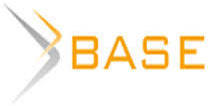A HYPERSPECTRAL IMAGE CLASSIFIERS WITHIN WIRELESS SENSOR NETWORK IN EXTREME ENVIRONMENTS
Progress in the field of computer networks has produced many areas of researches which paved the way for studying many new applications. One of the most popular applications that has shifted from the research level to the application level is wireless sensor networks (WSNs), based on which other advanced fields such as the Internet of Things are built.
These wireless sensor networks have been applied in many applications, and has proven to be an effective tool in collecting information in different environments, but with the expansion of the range of places that humans are interested in and trying to explore, the need has become urgent to apply wireless sensor networks to environments that are difficult to deal with by humans. This imposes new obstacles on the implementation and the performance of wireless sensor networks such as space, or applications that impose immersion of sensors in water, or industrial environments with high noise or medical environments, and perhaps toxic environments or those characterized by very high or very low temperatures. All these mentioned before prompted us to open new horizons of researches for wireless sensor networks to collect data from those environments.
Many studies have appeared to deal with these types of environments, and we will add to them the use of edge computing to deal with data at the place of gathering, especially in the space environment and aerial photography, where the data will be processed at the end of data collection and transmission since the transmission consumes the major part of energy, we will decrease by processing the date at the edge of the network. Classified information is sent only to the ground station to reduce bandwidth usage and perform real-time calculations.
Agha H.R., Abdul-Jabbar J. A hyperspectral image classifiers within wireless sensor network in extreme environments // Research result. Information technologies. – Т.8, №1, 2023. Р. 23-37. DOI: 10.18413/2518-1092-2022-8-1-0-2
















While nobody left any comments to this publication.
You can be first.